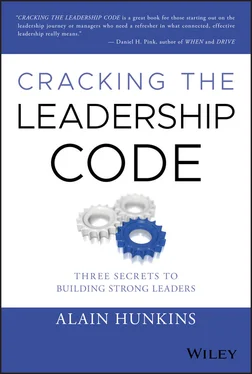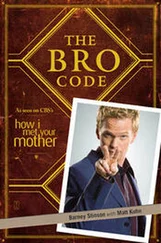Invisible threads are the strongest ties.
—Friedrich Nietzsche
When you connect with people on a personal level, they feel that you care about them. Connection provides the spark that gets others to willingly follow your lead. It's the main ingredient in trust. Think of Gary's decision to invite members of the organization out to coffee and/or lunch. He made the members feel valued, and he sent a clear message that he wanted to get to know and understand them. Connection doesn't come cheap; you need to give of your time and attention. However, your investment pays dividends of engagement and commitment.
There's a simple yet powerful exercise I've done with dozens of groups to demonstrate the importance of connection to become a better leader.
Let's try it together right now.
Grab a pen and paper and think of the best leader you've ever worked with. It can be a work leader, school leader, sports coach, and so on. Make a list of qualities of that leader. What made them so great? Come up with at least 10 qualities.
Now review those qualities. Place each quality into one of these three categories:
1 Intelligence/smarts (understanding, reasoning, judgment)
2 Technical skills (specific ability to perform a job function well)
3 Emotional intelligence (able to identify/manage their own emotions and recognize/influence the emotions of others)
Which bucket did most of the qualities fall into?
If you're like most people, most of the qualities landed in the emotional intelligence bucket. Great leaders have a sixth sense for people. They have a knack for saying the right thing at the right time. They know that support should sometimes be nurturing and other times be challenging. Above all, they know how to connect.
You can make more friends in two months by becoming interested in other people than you can in two years by trying to get other people interested in you.
—Dale Carnegie
Genuine, honest dialogue is one of the most powerful relationship-building tools in existence. In Gary's case, he intuitively recognized that the best leaders create candor and build trust by seeking first to understand. He didn't try to convince anyone why he was right for the job. Instead, he started by getting others to open up. He asked them to share about the things that really mattered to them. He sought to pull out their insight and experience.
Gary knew that the best way to create value in conversation was to create depth. He did this through deep listening. He asked big, broad, meaningful open-ended questions. Then, he took in what people really felt and really thought.
This ability to inquire—to draw out what matters most to people—is the basis for being an expert communicator. It's also a powerful means to build relationships.
Only after Gary made others feel understood did he seek to share his point of view. This tactic is an essential key to increasing influence. After all, at that point in the conversation, Gary knew exactly what was most important to the person he was speaking to; they had just told him.
For example, after hearing a member share their desire to attract more socioeconomically diverse members, Gary responded by sharing an idea on how to offer more scholarships for leadership trainings. This naturally created common understanding.
Gary's ability to create commonality is what psychologists call the similarity attraction effect . This is the phenomenon in which people are attracted more strongly to others who are similar to them (“like attracts like”). Gary's skill at creating Shared Understanding took a solid connection and made it even stronger. Then he could build a platform for working together.
The fun for me in collaboration is, one, working with other people just makes you smarter; that's proven.
—Lin-Manuel Miranda
Gary wasn't interested in leading in a vacuum. He knew that to achieve success, it would take a team. He didn't just ask for votes; he asked for help. He asked others to join him on this mission of building the organization.
In making this request, Gary tapped into one of the strongest motivators of human behavior: the desire to be part of something that is greater than oneself. When you work toward a greater good, it brings a tremendous sense of purpose and meaning.
Moreover, when something really matters to you, you naturally bring more passion and energy to it. You also feel the satisfaction that comes from making progress toward a meaningful goal.
Gary created a vision in which people could already see themselves as part of the bigger picture. He got them excited about turning that vision into a reality. The next logical step was to act: to elect Gary so that they could get started making their vision come to life.
Finding ways to inspire and motivate those whom you lead brings your influence to a whole new level. When you harness the power of collaboration, you will achieve so much more than you could otherwise.
You don't need to change the world; you need to change yourself.
—Miguel Ruiz

Ultimately, your leadership will be judged by your behavior: what you say and what you do. How you show up as a person is how you show up as a leader. You can't separate the two.
This idea isn't new. About 2,500 years ago, Socrates wrote, “To know thyself is the beginning of wisdom.” “Knowing thyself” has been rebranded as “self-awareness” in our present-day society.
Self-awareness is the foundation of emotional intelligence (EI). It's the basis of creating effective working relationships. After all, if you don't recognize your own drives and actions, how can you begin to understand the drives and actions of others?
Not only is EI essential to lead in today's organizations but also it's the competitive advantage of anyone who aspires to lead. In fact, when IQ and technical skills are roughly similar, EI accounts for nearly 90% of what moves people up the organizational ladder. 1
Marshall Goldsmith, considered by many to be the world's preeminent executive coach, wrote a best-selling book called What Got You Here Won't Get You There . If leaders want to continue to develop, he argues, they must grow and change—and the first step of change is self-awareness. You need to hold up the mirror and pay attention. After all, you can't change what you don't see. Self-awareness is the skill that enables you to transform unconscious incompetence or competence into conscious competence. You can't become excellent at anything if you're oblivious as to why and how you do it.
Know thyself. It sounds so easy.
But it's easier said than done. Looking in the mirror is a lot harder than it seems. It takes humility to recognize that what's staring back at you is less than perfect.
We humans have a cognitive bias called illusory superiority . It's the reason that 90% of drivers think their driving skills are above average. 2It's common to overestimate our own abilities relative to others. Looking at our own flaws is hard. Some people find the process of self-examination so uncomfortable that they will repress, hide, or deny the facts. I certainly hid from the truth in the run-up to the election with Gary. However, as ostriches demonstrate so well, putting your head in the sand doesn't make reality go away.
If the idea of change makes you uncomfortable, you're on the right track. Leaders who are committed to developing themselves keep putting themselves in situations outside of their comfort zone. They know it's the only place they will grow.
Читать дальше













